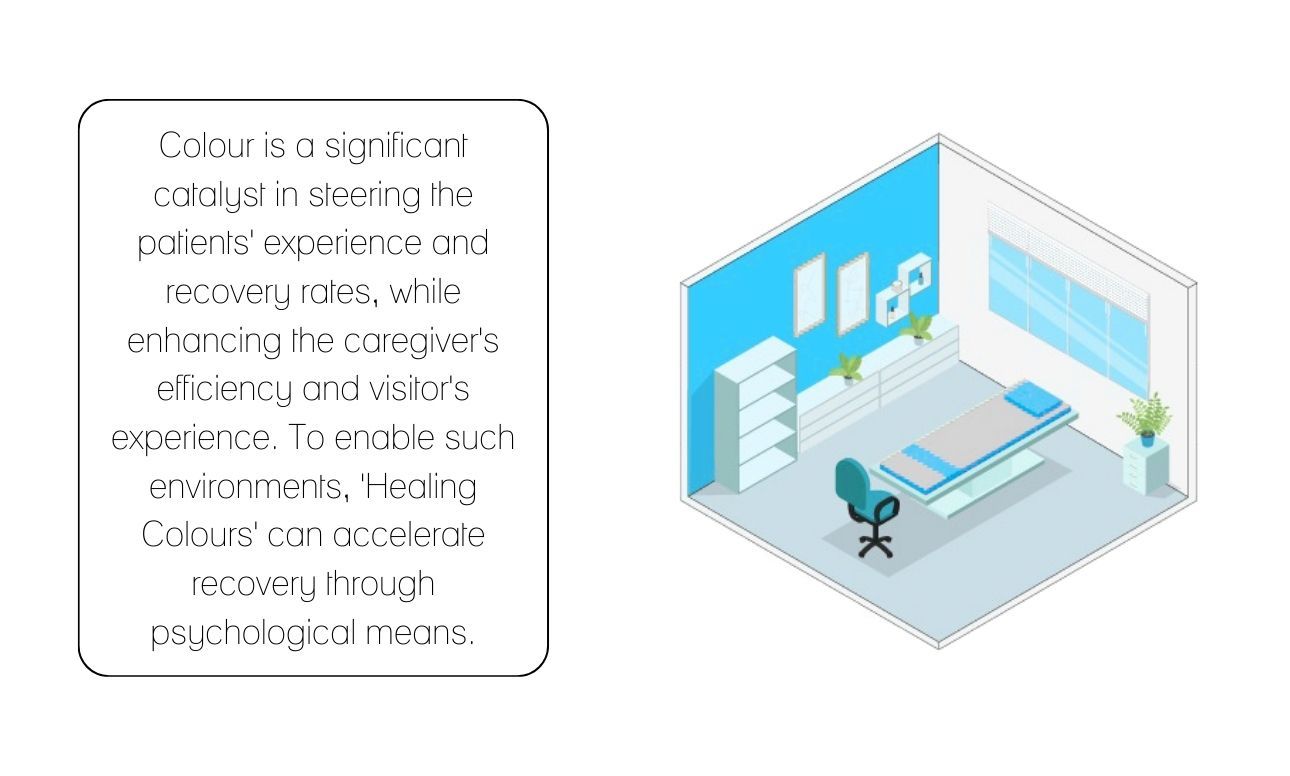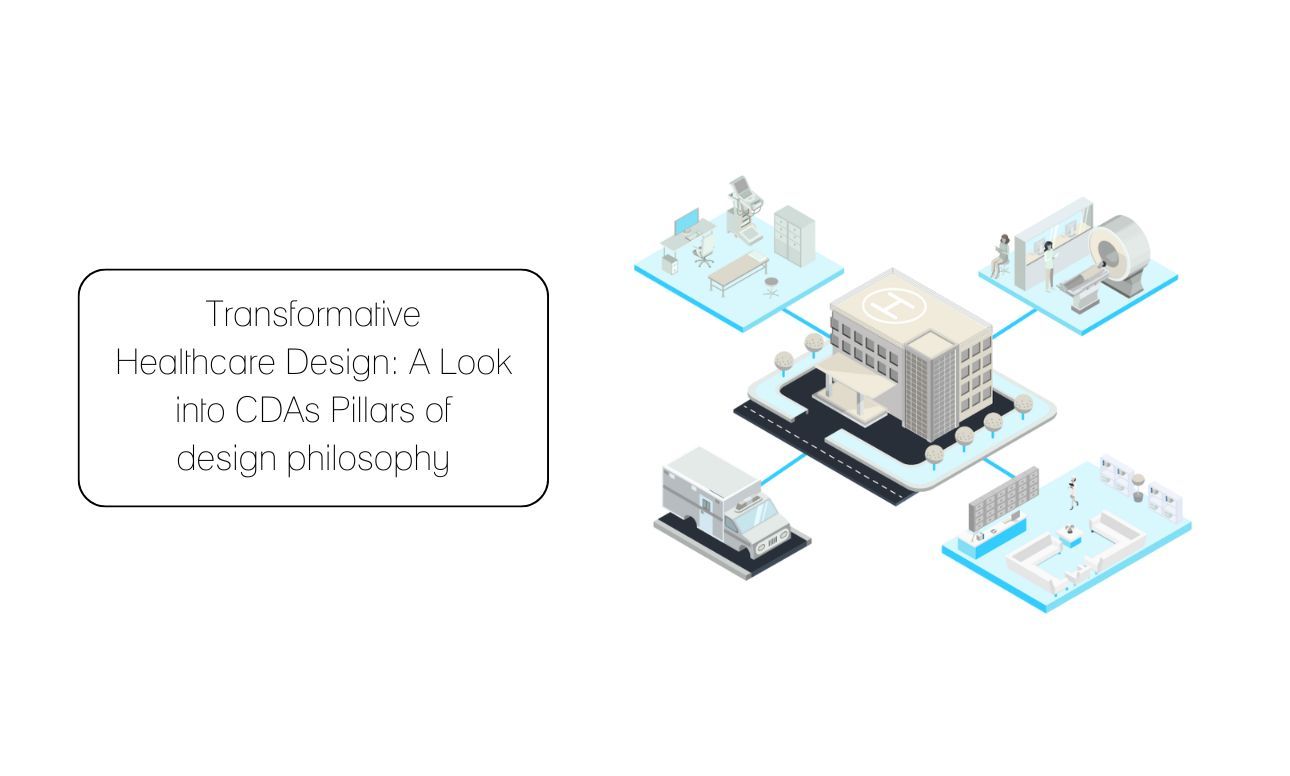

13-07-2023
The Integration of Neuro-Aesthetic Design in Indian Hospitals Ravideep Singh

A Paradigm Shift in Patient Well-being and Healing Experience
Neuro-aesthetics, in fundamental terms, is psychologically responsive design, i.e., curating a sensory experience that is responsive to the needs of the setting and its inhabitants. Neuro-aesthetics, an apparently nascent phenomenon – has indeed been in existence since the inception of humankind.
Neuro-aesthetics arguably embodies an exceptional level of synergy with healthcare design where-in patients and caregivers alike endure varying degrees of stress. Patients experience stress due to anxiety about treatment, invasion of privacy, loss of control, ambiguities in medical bills, insurance coverage and so on. Similarly, caregivers experience stress due to long work hours, handling patients with grief etc. It is fascinating to know what a psychologically well-informed design, or ‘Neuro-Aesthetic’ design, can do in terms of alleviating this stress via carefully curated sensory experiences, i.e. visual, tactile, experiential, acoustic and olfactory, which have been shown to positively rewire the stress nodes within our brain and render comfort.
In recent years, the Indian healthcare landscape has witnessed rapid growth and evolution, and so did its healthcare design ethos. In addition to the massive leaps in clinical technology, there has been a growing awareness in terms of neuroscience and behavioural health. This design strategy, backed up with data and evidence, is emerging as a pivotal, non-clinical tool in enhancing the patient experience and expediting healing.
Neuro-Aesthetic Design Elements: Transforming Healthcare Institutions
Neuro-aesthetic design elements, possibly aliased into varying connotations such as biophilic, nature-centric, or psychologically responsive design, are witnessing increased acknowledgement and acceptance in most upcoming healthcare institutions in India. These elements fundamentally encompass the study and analysis of the space vis-à-vis the end-users and their neurological conditions. For instance, the intended sensory response of a waiting room would vary from that of a patient room or an infusion therapy pod.
In the realm of healthcare, neuro-aesthetic design involves carefully curating a conducive sensory experience that befits the neurological conditions of the end-users. From a spatial design standpoint, consider the infusion pod for a cancer patient undergoing a chemotherapy session. Such a patient would possibly appreciate positive distractions, such as views of nature through a large window, a seamless clutter-free design with colour palettes of green known to reduce chronic pain, and other elements that contribute to a sense of calm and tranquillity.
Beyond the physical space, the neuro-aesthetic design also extends to facility planning, where healthcare providers and designers collaborate to optimise efficiency and enhance user experience. This involves incorporating features like daylighting through courtyards, higher deck-to-deck heights, colour-responsive interior design, and, most importantly, mapping the user trajectory to ensure a well-articulated journey throughout the facility.
The Impact of Neuro-Aesthetic Design on Patient Outcomes and Satisfaction
The connotation of neuro-aesthetic design is still nascent, yet the positive impacts of this strategy are well-known and acknowledged, particularly in the wake of the COVID-19 pandemic. The increased significance of behavioural health, previously disregarded, has highlighted the importance of creating healing environments that cater to the psychological well-being of patients and caregivers alike. While there is no system deployed to quantify the impacts at a policy level scientifically, isolated pilots are being conducted periodically to gauge the efficacy of neuro-aesthetic design elements.
It is imperative, with the advent of Hospital IoT (HIoT) technology, to initiate data collection and formulate literature that substantiates the efficacy of neuro-aesthetic design elements. This literature, in conjunction with the ever-evolving clinical technology, is envisaged to revolutionise healthcare by placing a greater emphasis on a human-centric approach.
Integration of Neuro-Aesthetic Design in Indian Hospitals
In the Indian context, where healthcare is witnessing rapid growth and evolution, the adoption of neuro-aesthetic design principles represents a forward-thinking mindset. The investment in creating spaces that promote healing, positivity, and comfort demonstrates a commitment to patient-centred care. Such an approach not only improves patient outcomes and satisfaction but also supports the well-being of healthcare professionals by alleviating their stress and creating a nurturing work environment.
Integrating neuro-aesthetic design principles in Indian hospitals signifies a paradigm shift in the healing experience. By merging scientific insights from neuroscience, psychology, and design, healthcare institutions are embracing a holistic approach that goes beyond clinical treatments and interventions.
We can hope that the journey towards an integrated healthcare system that recognises the importance of neuro-aesthetic design has begun, and its impact will undoubtedly shape the future of healthcare in India.













